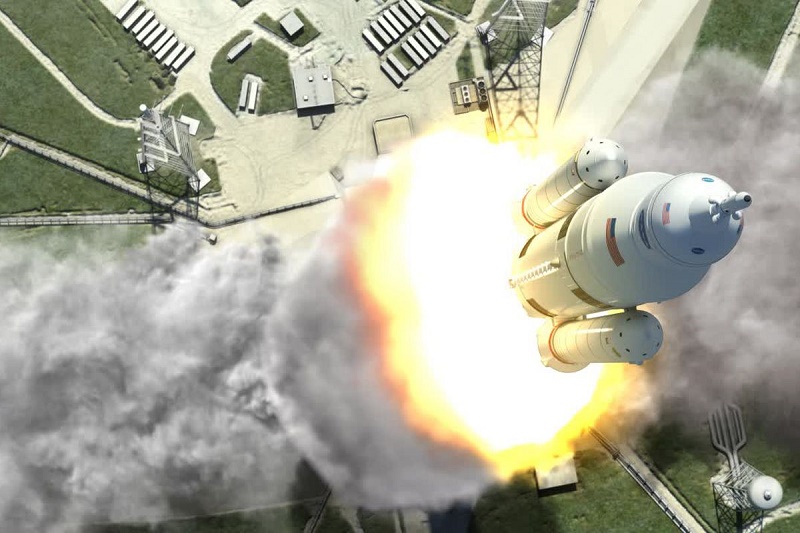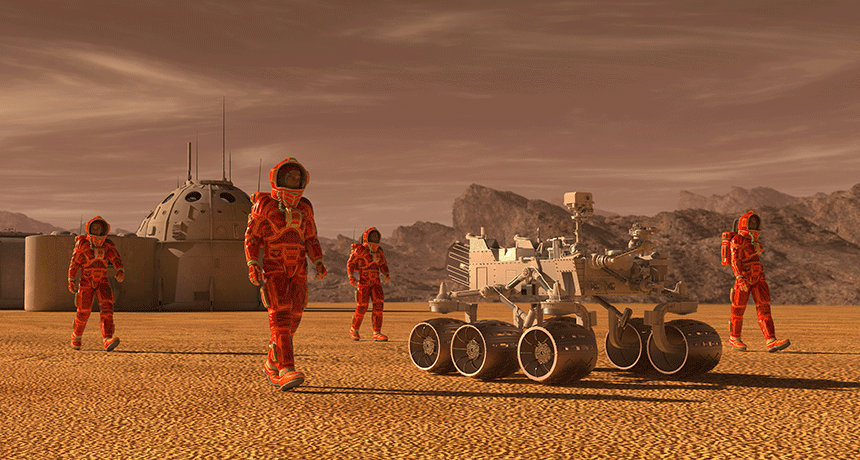
At a distance of about 225 million kilometers, Mars represents a greater challenge than the missions of the Apollo to the Moon. Mortal radiation of the cosmos, possible loss of vision and atrophied bones are just some of the challenges that scientists must overcome before an astronaut can step on Mars, experts and officials of NASA said Tuesday.
The US space agency believes that in the next 25 years can put a man on the red planet, but the technological and medical challenges that stand in the way for that to happen are enormous.
The Nasa bets to take men to Mars
“With the current budgets, or something higher, it will take about 25 years to solve those challenges,” said retired NASA astronaut Tom Jones, who traveled to space in different missions.
“We have to start now with certain key technologies,” he told a news conference in Washington.
At a distance of about 225 million kilometers, Mars represents a greater challenge than the missions of the Apollo to the Moon.
With the technology currently available, an astronaut would take up to nine months to reach Mars, and the physical cost of floating so long in zero gravity would be enormous.
For example, scientists believe that this could cause irreversible changes in the blood vessels of the retina, which would lead to a degradation of sight.
Also, after a time in zero gravity, the skeleton would begin to lose calcium and bone tissue.
With a gravity of only one third about that of Earth, experts are still unaware of the effects of a one-year mission to the surface of Mars.
Better propulsion
One way to reduce the damage to the human body is to reduce travel time to the planet significantly.
Jones believes that nuclear propulsion systems would have the additional benefit of producing energy in aircraft.
“If we start now, in 25 years we could have technologies available to help protect us from these long travel times,” he said.
In today’s conditions, a single leg of the trip to Mars would take so long that an astronaut would receive the same amount of radiation that is considered safe throughout his career.
“We still do not have the solution regarding safety, regarding protection against cosmic rays and solar flares to which (the astronaut) is exposed during this transit time,” Jones said.
Specialists have identified several technologies that need to be developed quickly, including a ship that can withstand the harsh entry to Mars and land gently, and the ability to return passengers to Earth.
NASA has a new robotic landing module called InSight that is heading for Mars, where it will land on November 26 after taking off from California on May 5.
The $ 993 million project aims to expand knowledge of conditions on Mars to send explorers, and reveal how rocky planets like Earth formed billions of years ago.
Jim Garvin, the chief scientist at NASA’s Goddard Space Flight Center, believes InSight will complete the “critical unknowns” and help to have a clear understanding of Mars.
In 2020, another NASA mission will send a vehicle to that planet, to determine the habitability of the Martian environment, look for signs of ancient life and evaluate natural resources and the dangers for future human explorers.
Also, private companies such as SpaceX and other nations are developing technologies that could be used in upcoming missions to Mars.





